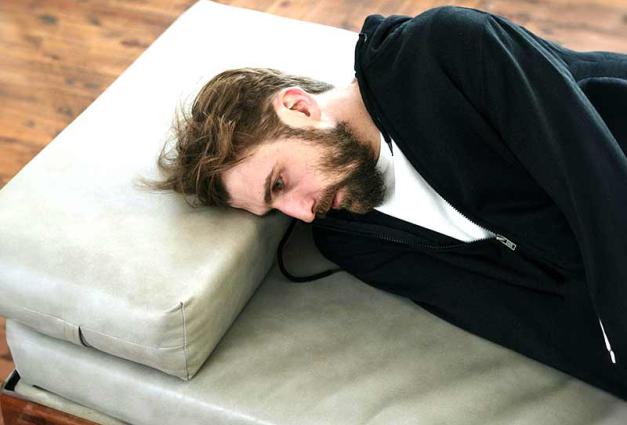Think for a moment about the people to whom you have been romantically attracted. What characteristics did these people have that attracted you to them? Were they kind? Good looking? Did they have a stable job? Were they intelligent, humorous, caring?
What we desire in a partner—what psychologists call our “mate preferences”—seem to come to mind easily. Ask a friend what type of person they’d ideally like to marry, and they can effortlessly list off a set of characteristics they prefer. But why are certain characteristics desirable to us?
Psychologists have attempted to answer this question for decades, coming at it from several different angles. For example, researchers in evolutionary psychology have emphasized the role of human evolutionary history. They suggest that our mate preferences correspond to the challenges our prehistoric ancestors faced in the environments in which evolution occurred. Throughout human evolutionary history, both men and women benefitted, reproductively speaking, from finding a good cooperative partner. Therefore, both men and women want mates who are kind and generous.
Women, though, faced the unique challenge of nine months of pregnancy, followed by lactation—processes that require extra resources such as food. Therefore, women, more than men, look for characteristics in a mate that indicate abilities to acquire resources needed for themselves and their children.
Men, on the other hand, faced the unique challenge of finding fertile partners. Whereas most men are fertile throughout their entire adult life, women’s reproductive years are limited by menopause. As a result, men, more than women, prefer characteristics such as relative youth and attractiveness because, throughout human evolution, men who preferred younger over older mates had more offspring. Evolutionary researchers think that these preferences for the characteristics men and women look for in their partners are the products of universal psychological adaptations—aspects of human nature that all of us share.
Although most researchers agree that both evolution and socialization play a role in shaping human mate preferences, some emphasize the role of socialization. These researchers theorize that differences between men's and women’s bodies led to a division of labor between men and women that created different societal expectations of gender roles. For example, because men have greater upper body strength than women on average, they may have historically performed tasks involving strength. In contrast, because women are the ones who bear children, they historically performed tasks that involved caring for infants and young children. With these gender roles in place, we learn to prefer characteristics in our partners that reflect social role expectations of what men and women are supposed to be like. Of course, societal expectations about gender roles vary somewhat across the globe. Socialization researchers have predicted that in places where men and women are treated more equally, the mate preferences of men and women will be more similar.
My colleagues and I recently tested these two theories about the origin of mate preferences. We asked more than 14,000 men and women from 45 countries around the world what they wanted in a long-term mate. We asked: “How kind should your ideal mate be? How physically attractive? What should their financial prospects be like? How healthy should they be? How intelligent?” This large, multi-country sample provided us with an invaluable opportunity to identify both the aspects of mate preferences that are common around the world as well as those aspects that differ from culture to culture.
Replicating other research, we found that, around the world, both men and women preferred kindness, health, and intelligence the most in a mate. However, women wanted slightly more of these qualities than men did on average. Women also indicated that they wanted an ideal mate to have better financial prospects than men said they wanted. Men, on the other hand, said they wanted a more physically attractive mate than women said they wanted. These universal patterns represent clear fingerprints of human evolution on our mating psychology.
However, the differences between men’s and women’s preferences varied in magnitude across cultures. In China and Nigeria, for example, women and men indicated similar levels of preference for physical attractiveness. To examine whether this variation could be explained by differing societal expectations about gender roles, we looked at whether men and women had more similar preferences in countries with greater gender equality. We found that, even in countries where men and women had more similar roles, their mate preferences still differed in ways predicted by evolutionary researchers.
However, one difference did narrow in locations that have greater gender equality. In terms of who people actually chose as a partner, women around the world tended to have partners who were a few years older than them, on average, and men had partners a few years younger than themselves. Yet, in countries with greater gender equality, men and women tended to have romantic partners closer to their own age.
Overall, we found some support for predictions from both evolutionary and socialization perspectives. It might be tempting to interpret these results in terms of the old standbys of “nature” vs. “nurture”—or, worse, to declare one the winner! This would be misguided. Our results indicate that our mate preferences result from our evolutionary history but are shaped through socialization, too. Nature and nurture are not in competition. Rather, our evolved psychology enables us to adjust our mate preferences in response to information in our local social environment. This relevant information could include the number of potential mates around us, our own ability to attract desirable mates, or messages from older, experienced members of our society.
In the future, if you find yourself gazing across a restaurant table at a desirable potential mate, pondering “Why do I like this person?” don’t just look inside yourself. Remember that you are the product of an unbroken chain of ancestors, each of whom successfully mated and reproduced. From them, you’ve inherited a mating psychology that interacts with your particular circumstances, leading you to prefer some characteristics more than others. Your desires are the result of a lifetime of experience, shaped by thousands of years of human culture, itself structured by billions of years of evolution.
For further reading
Buss, D. M. (1989). Sex differences in human mate preferences: Evolutionary hypotheses tested in 37 cultures. Behavioral and Brain Sciences, 12, 1–14. doi:10.1017/S0140525X00023992
Walter, K. V., Conroy-Beam, D., Buss, D. M., Asao, K., Sorokowska, A., Sorokowski, P., … Zupančič, M. (2020). Sex Differences in Mate Preferences Across 45 Countries: A Large-Scale Replication. Psychological Science, 31(4), 408–423. https://doi.org/10.1177/0956797620904154
Wood, W., & Eagly, A. H. (2012). Biosocial Construction of Sex Differences and Similarities in Behavior. In Advances in Experimental Social Psychology (Vol. 46, pp. 55–123). Elsevier. https://doi.org/10.1016/B978-0-12-394281-4.00002-7
Katy Walter is a PhD candidate at the University of California, Santa Barbara. She studies human mating psychology.



